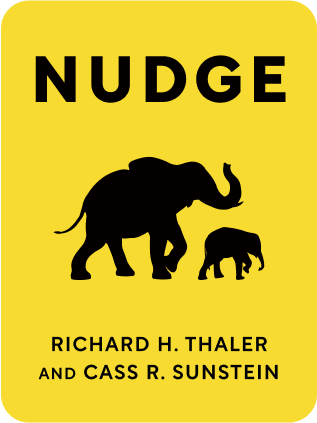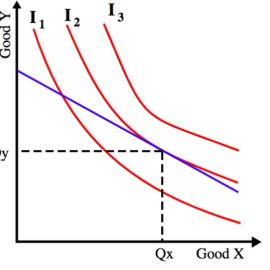

This article is an excerpt from the Shortform summary of "Nudge" by Richard H. Thaler and Cass R. Sunstein. Shortform has the world's best summaries of books you should be reading.
Like this article? Sign up for a free trial here .
What are the most common biases? How do those biases affect your ability to make snap decisions?
In the book Nudge, the authors discuss the most common biases which are the anchoring bias, the availability bias, the representativeness bias, the status quo bias, and the loss aversion bias. These biases, whether intentionally or not, can skew your judgments.
Continue below to learn about each of the most common biases from Nudge.
Common Biases
In their book Nudge, Thaler and Sunstein argue that people have evolved to make snap decisions in a wide variety of areas in order to save time and mental energy—we’re more likely to survive if we rely on rules of thumb (largely accurate guides based on experiences in similar situations) when deciding—for example, whether an animal is a threat (if we spend time carefully analyzing it, we might be eaten before reaching our conclusion).
They note that while such rules of thumb—also called heuristics or biases—can be helpful, they can also mislead us into making poor decisions. Biases can be helpful when we, for example, estimate how often we’ll need to stop for gas on a trip, or when we try a new food because we’ve had good experiences experimenting previously. But, biases can harm us when they skew our judgments. For example, we may see that everyone’s buying up a hot stock and might jump to invest without properly assessing the risk (relying on the rule of thumb that if everyone’s doing something, it can’t be wrong)—and we might lose our investment if the stock subsequently tanks.
List of Common Biases
Some of the common biases that Thaler and Sunstein discuss in the book, upon which many of their nudges rely, include:
- The anchoring bias—when we take a fact we know (or think we know) and adjust it to account for a fact we don’t (such as when an auction opens the bidding at a high number because people associate a high price with value and will therefore see that object as valuable (Shortform note: Impulsive decision-making favors anchoring bias, so using a simple checklist can help you overcome it.)
- The availability bias—when we answer questions and make judgments on the basis of whether comparable examples come readily to mind rather than statistical probability (if you hear a story of someone surviving a deadly disease, you’re likely to think it’s less deadly than the statistics show) (Shortform note: In business, you can avoid availability bias by creating diverse teams and seeking broad input.)
- The representativeness bias—when we categorize a phenomenon based on how similar it is to the stereotype of some category (when you believe a lawyer is skilled because she has a fancy office) (Shortform note: To avoid representativeness bias, ask others to point out when you’re relying on it.)
- The status quo bias—when we stick with our first choice or current situation, just because (when you stick with your current phone service provider even though a different one offers a better deal). This bias leads to inertia—the tendency toward inaction. (Shortform note: Marketers often try to overcome consumers’ status quo bias by framing the current status as a losing proposition.)
- The loss aversion bias—when we psychologically feel losses more strongly than gains, and therefore try to avoid them, even if it means we pass up opportunities in doing so or make risky decisions to avoid losses (think the stock market). (Shortform note: Studies show that people feel losses more than gains by approximately two to one.) Like the status quo bias, this bias can lead to inertia, because we’re wary of the risks of change.
(Shortform note: The names of these common biases were coined by Kahneman, Tversky, and Thaler, as well as behavioral psychologists William Samuelson and Richard Zeckhauser. They’re widely used today in behavioral economics and are accepted as a basis for many psychology theories in both academic circles and on more informal platforms, like blogs.)
| Do Cognitive Biases Exist? Kahneman and Tversky vs. Gigerenzer Throughout Nudge, Thaler and Sunstein take the cognitive biases (or, in Kahneman and Tversky’s early formulation, “cognitive illusions”) of heuristics for granted. However, researchers have challenged at least some of the psychological research on which Thaler and Sunstein rely. The most formidable challenge to heuristics research has been mounted by German psychologist Gerd Gigerenzer. In “How to Make Cognitive Illusions Disappear: Beyond ‘Heuristics and Biases’,” Gigerenzer objects that Kahneman and Tversky (hereafter “K&T”) have adopted a problematically narrow interpretation of probability theory. K&T’s notion of biases (and the errors of judgment they produce) depend on norms of statistics and probability—in other words, that the rules of probability produce a “correct” answer, one that people miss because they rely on heuristics. Gigerenzer argues that K&T are misapplying probability theory because they concentrate on single events rather than the frequency of events. To explain what he means, Gigerenzer recounts one of K&T’s most famous survey questions. In the preface to the question, they describe “Linda” as being an outspoken and intelligent former philosophy major, who, as a student, was active in the social justice and anti-nuclear movements. K&T then ask which is more probable: (a) Linda is a bank teller (b) Linda is a bank teller and active in the feminist movement In the original experiment, a whopping 85% of participants chose (b). According to probability theory, though, the conjunction of two events—that Linda is both bank teller and feminist, for example—is always less probable than the incidence of one of those events. In short, the participants were fooled by the representativeness heuristic: Because Linda fit their notion of a feminist, they chose (b), even though there are bound to be more bank tellers than there are bank tellers who are also feminist activists. However, for Gigerenzer, the participants’ choice of (b) isn’t an error. Because K&T ask for the probability of a single event—that Linda is a bank teller and feminist activist—rather than a frequency of events, K&T aren’t actually testing people’s ability to gauge probabilities at all. (Rather, writes Gigerenzer, they’re asking a question about social psychology.) Gigerenzer notes that, when the question asks about frequency rather than a single event, the representativeness heuristic disappears. In a different version of the question, participants are told that there are 100 people who fit Linda’s description (philosophy major, active in social justice movements). Then participants are asked how many of them are (a) bank tellers (b) bank tellers and active in the feminist movement When the question is phrased this way, the numbers effectively reverse, with over 80% of participants answering that more people are (a) than (b). K&T, for their part, dispute Gigerenzer’s characterization of their findings, noting that a central part of their research program is indeed exploring how the framing of a question can affect people’s reasoning ability. (Again, if we were all homo economicus, the wording or context of a particular question would be immaterial.) In fact, K&T report in their own work that changing the wording of a question to emphasize frequency mitigates the representativeness heuristic. In other words, they allege that Gigerenzer’s critique is based on their own results. Gigerenzer’s subsequent research program has focused on the advantages of “fast and frugal” reasoning—that is, the advantages of gut feelings and heuristics. At the moment, though, his critique seems to have lost out: Kahneman and Tversky’s (and so Thaler and Sunstein’s) theories of heuristics are dominant in the fields of behavioral psychology and economics. |

———End of Preview———
Like what you just read? Read the rest of the world's best summary of Richard H. Thaler and Cass R. Sunstein's "Nudge" at Shortform .
Here's what you'll find in our full Nudge summary :
- Why subtle changes, like switching the order of two choices, can dramatically change your response
- How to increase the organ donation rate by over 50% through one simple change
- The best way for society to balance individual freedom with social welfare






